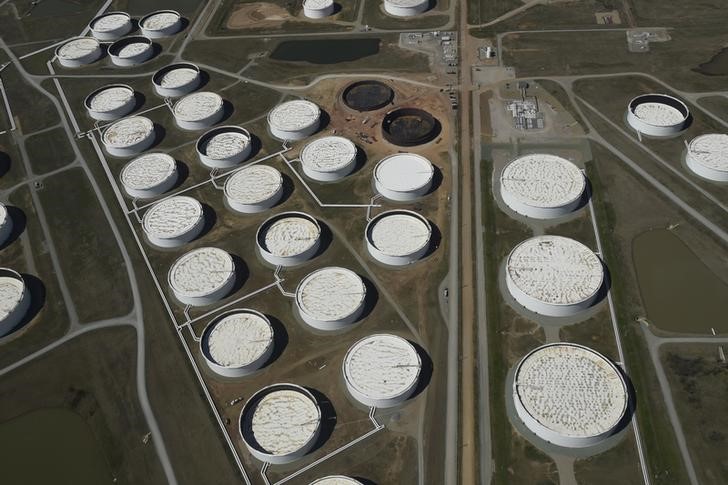By Barani Krishnan
NEW YORK (Reuters) - Oil prices steadied on Friday after touching three-month lows during a week-long selloff fuelled by a persistent global supply glut, bringing the monthly decline to nearly 15 percent, the biggest monthly loss in a year for U.S. crude.
Slower economic growth and high inventories of crude and refined oil products have driven Brent and U.S. West Texas Intermediate (WTI) crude futures to bear market territory, 20 percent below their 2016 highs.
The two benchmarks matched April lows on Friday before their most actively traded contracts settled up on what traders said was short-covering by investors taking profit on bearish bets.
Hedge funds, some of the biggest bulls in oil, slashed their positive bets on U.S. crude to a five-month low during the week to July 26, while holding a record net short, or bearish position, on gasoline, data showed.
The dollar's drop to a three-week low (DXY) also made greenback-denominated oil more affordable to holders of the euro and other currencies. [FRX/]
The September Brent contract
Brent's more actively traded October contract
WTI's front-month contract, September
Crude prices remained up more than 55 percent from 12-year lows of $26 to $27 hit in the first quarter. The recovery faded after prices above $45 enticed U.S. oil drillers to return to the well pad. Drillers added 44 rigs in July, the most in a month since April 2014.
Cheap crude has led refiners to produce more fuel worldwide, adding to the oversupplied market. Oil majors Exxon Mobil Corp (N:XOM), BP Plc (L:BP), Royal Dutch Shell Plc (L:RDSa) and Chevron Corp (N:CVX) each had a poor second quarter because of weak refining margins.
"Doubts are rife as to whether the oil supply imbalance is indeed slowly drawing to an end," said Stephen Brennock, of London-based oil brokers PVM.
Some traders said oil could see technical support in the near-term after Brent and WTI fell below their 200-day moving averages on Friday.
Analysts in a Reuters survey said they expected higher oil prices this year based on growth in demand.

"We are maintaining a bearish posture while at the same time suggesting that additional crude price declines of around $4 a barrel from current levels could require a few more weeks," said Jim Ritterbusch of Chicago-based oil markets consultancy Ritterbusch & Associates.